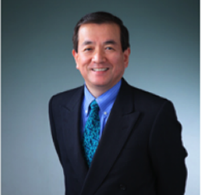Scientific Program
Keynote Session:
Oral Session 1:
Title: Electronic water can reduce oxidative stress in cancer and diabetes patients for 3 weeks drinking
Biography:
Masahiro Onuma has expertise in oxidative disease prevention to use non-medical product based on GSK’s experience of Allopurinol which is the strongest anti-oxidant efficacy in this world. He creates new indication of Allopurinol for stomatitis induced by cancer treatment which was approved by the Japanese Cancer treatment committee to propose new mechanism of Allopurinol for anti-oxidant. And now, there are so many new research papers of Allopurinol in the world.
Abstract:
Oxidative stress means a state there is imbalance between the oxidizing action and the reducing action due to reactive oxygen species (ROS) in a living body, resulting in the oxidizing action becoming dominant.
Oxidative stress arises as the balance between production and removal is disrupted through excessive production of ROS and impairment of the antioxidant system. Oxidative stress has been reported to be involved in the onset and progress of various diseases.Characteristics of Type 2 diabetes are insulin secretion failure and insulin resistance, but it seems that oxidative stress is greatly involved in insulin secretion failure. In the insulin secretion-inducing cells of Langerhans islets in the pancreas, the amount of superoxide dismutase (SOD), which is representative of the ROS elimination system, is small and resistance to oxidative stress is considered to be weak. Regarding cancer, it is well known that chronic inflammatory conditions increase the risk of carcinogenesis.
Cells such as neutrophils and macrophages are activated in the inflammation area leading to increase in production of active oxygen and nitric oxide. These free radicals cause DNA mutation and cell proliferation thereby promoting cancer development. When chronic inflammation is present, cancer develops more easily. Electronic water, which was developed to generate electron in water, was consumed for three weeks, after meals, between meals and before sleeping 6 times a day, and according to the test subjects' possible time periods.
The amount of drinking water was 750-1000 mL, and BAP and d-ROMs checks for all cases were carried out at 4:30 pm. The results of cancer patients and diabetes patients were seen as attached. As a result, the d-ROMs value in the degree of oxidative stress has reduced, and the BAP value, which is an indicator of plasma antioxidant capacity, has improved significantly.
Title: An improved bio fabrication process to enhance cell survival of cartilage regeneration and functionality of the osteoarthritic knee when enriched with bone marrow mesenchymal stem cells
Biography:
Jose Manuel Baena is a research associate in "Advanced therapies: differentiation, regeneration and cancer" at IBIMER, CIBM, Universidad de Granada. He is the Founder of BRECA Health Care, pioneer in 3D printed custom-made implants for orthopaedic surgery, and REGEMAT 3D, the first Spanish bioprinting company. He is an expert in innovation, business development and internationalization, lecturer in some business schools and he also is passionate about biomedicine and technology. In his free time, he is also serves as a researcher at the Biopathology and Regenerative Medicine Institute (IBIMER).
Abstract:
Tissue regeneration (TR) is currently one of the most challenging biotechnology unsolved problems. Tissue engineering (TE) is a multidisciplinary science that aims at solving the problems of TR. TE could solve pathologies and improve the quality of life of billions of people around the world suffering from tissue damages. New advances in stem cell (SC) research for the regeneration of tissue injuries have opened a new promising research field. However, research carried out nowadays with twodimensional (2D) cell cultures do not provide the expected results, as 2D cultures do not mimic the 3D structure of a living tissue. Some of the commonly used polymers for cartilage regeneration are Poly-lactic acid (PLA) and its derivate as Poly-L-lactic acid (PLLA), Poly (glycolic acids) (PGAs) and derivate as Poly (lactic-co-glycolicacids) (PLGAs) and Poly caprolactone (PCL). All these materials can be printed using fused deposition modelling (FDM), a process in which a heated nozzle melt a thermoplastic filament and deposit it in a surface, drawing the outline and the internal filling of every layer. All these procedures use melting temperatures that decrease viability and cell survival. Research groups around the world are focusing their efforts in finding low temperature printing thermoplastics or restricted geometries that avoid the contact of the thermoplastic and cells at a higher temperature than the physiologically viable. This has mainly 2 problems; new biomaterials need a long procedure of clearance before they can be used in clinical used, and restrictions in geometries will limit the clinical application of 3D printing in TE.



